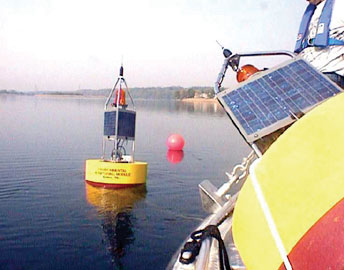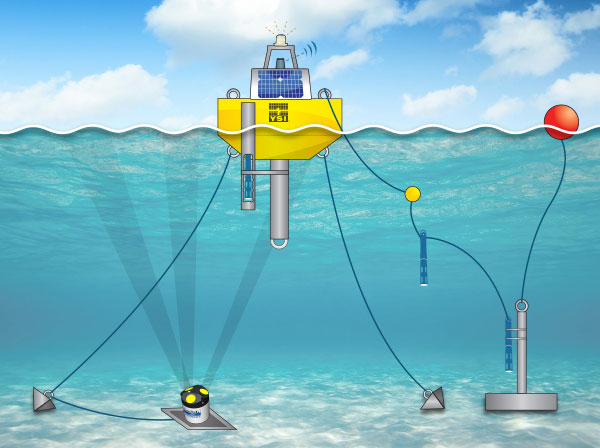Water Quality Monitoring Buoys Protect the Housatonic River
When replacement of the Sikorski Bridge spanning the Housatonic River was authorized, Paul Corrente and the Connecticut Department of Transportation (CT DOT) set about the design and development of a water quality monitoring program to monitor the contractor’s in-water activities to ensure full protection of the river from perturbation. Corrente and his colleagues at CT DOT and Connecticut Department of Environmental Protection (CT DEP) have many years of experience in water quality monitoring at such sites. They know that the operation of such a program is vital to the protection of the river, but that it's also complex, expensive, and can often be dangerous.
The US EPA and CT DEP, through the Clean Water Act, require that construction activities, such as that for the replacement of the Sikorski Bridge, not result in a 5 NTU (nephelometric turbidity units) or greater increase of turbidity, above background levels, at the same depth, for two continuous hours. Making certain that in-water construction adheres to these criteria is CT DOT’s responsibility.
Replacement of the Sikorski Bridge required years of in-water construction. In order to ensure that river water quality was not impacted as defined by Clean Water Act criteria, monitoring had to be continuous and maintained for the duration of the project.
In the past, water quality monitoring at such a site was performed hourly from a boat during in-water construction activities, with handheld technology being used to make measurements in vertical profile, upstream and downstream of the site. However, before proceeding with their standard modes and methods, Corrente looked for alternatives, and found a viable one being employed by his counterparts at CT DEP: YSI water quality data buoys.
CT DEP uses three YSI Data Buoys to continuously monitor water quality in principal areas and receive that data in real-time by telemetry. These buoys are configured to collect water quality at discrete depths in vertical profiles using any of YSI’s multiparameter sondes. Corrente had the alternative solution for their monitoring requirements and now had the task of convincing budget authorities that this technology should be used instead of the manual method. “The cost upfront is the obstacle,” said Corrente. “That’s the major hurdle, but in the long run it saves the risk of injury, labor, operating costs and provides continuous monitoring of the parameters that we need, and in real-time … the equipment is excellent.”
"In the long run, it saves the risk of injury, labor, costs and provides continuous monitoring, and in real-time … the equipment is excellent.”
Corrente convinced his colleagues of the need for change and included two YSI monitoring buoys in the construction contract (purchase, installation, and maintenance by contractor). When the monitoring program was completed, the buoys were transferred to CT DEP for future monitoring projects.
Both of CT DOT’s data buoys are equipped with two YSI multiparameter sondes, which can measure up to 14 water quality parameters, including turbidity. In addition, each data buoy is equipped with a data logger, the telemetry devices necessary for two-way communication, and the appropriate moorings and riggings. Corrente said, “Turbidity is typically the number one [water quality] problem …the YSI buoys are the greatest thing out there for monitoring this kind of site.”


Additional Blog Posts of Interest:
Water Quality Monitoring Technology Protects One Million People
Monitoring Coral Reefs Caribbean: Protecting Our Rainforests of the Ocean
Monitoring Wastewater in Hawaii Protects Local Beaches
Water Quality Monitoring Aids Conservation of Threatened Lake